Art & Exhibitions
Have You Seen This Goat? Artist Duke Riley’s Hunt for a Long-Lost Animal Headlines His New Show
At "The Repatriation of King Skellig Mór," Riley enacts a form of remembrance for the lost animal.

Duke Riley has long been captivated by the sea. When I reached the Brooklyn-based artist over the phone, he was sailing off Rhode Island on his boat, on which he lives for months out of the year. He attempted to boil his feelings for seafaring and maritime history down into a neat one-liner—and failed. “It’s the kind of thing that I could write a thesis on,” he told me.
Not long ago, while reading up on Theodore Roosevelt’s Great White Fleet, a group of 16 battleships the U.S. president sent on a 1907–09 world tour to showcase the nation’s military might, he stumbled on a curious fact. In the early 1900s, the USS Vermont was once home to a goat named Skellig Mór, which lived on the battleship as a sort of mascot. Just as intriguing was the creature’s back story and its fate, now long forgotten.
The legend of Skellig Mór has since sent Riley on a quest to locate the animal’s remains. Over the past month, he has plastered missing posters on the street, placed an ad in the Boston Globe, and set up a hotline to receive tips about its whereabouts. He told me the search has not yet yielded any good leads, but he’s been in touch with folks from Boston College who are volunteering their help.
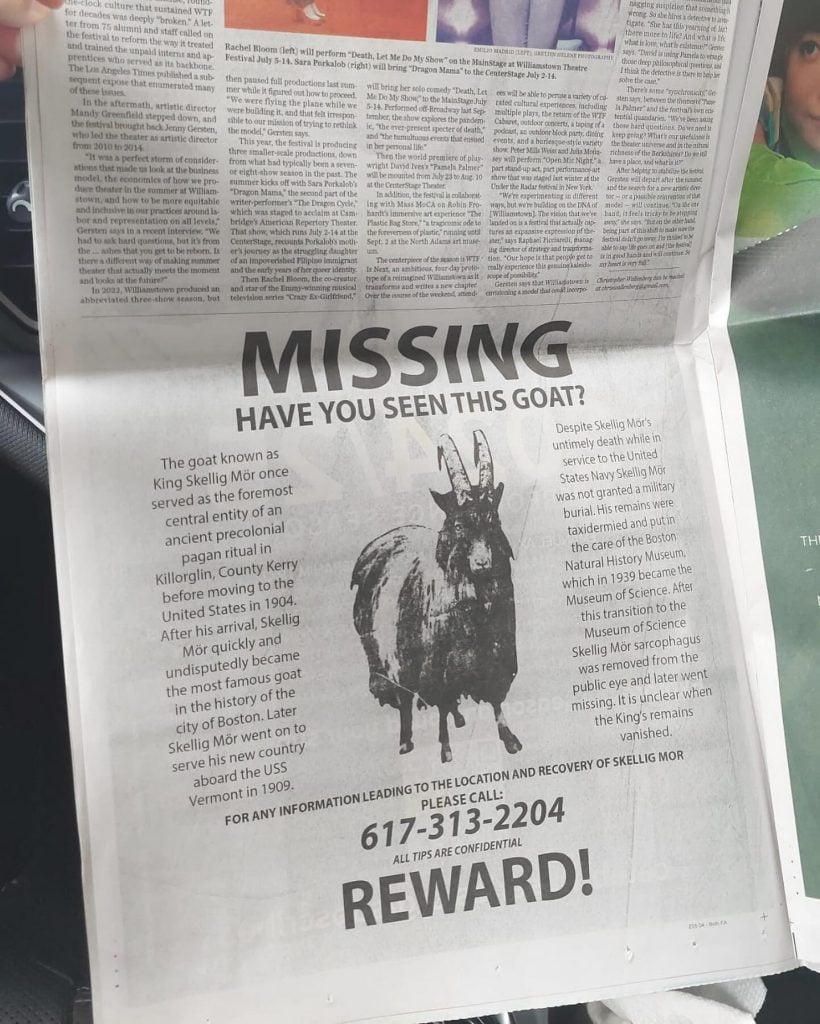
Duke Riley’s missing poster for Skellig Mór in the Boston Globe. Photo: @dukerileystudio on Instagram.
And what might Riley want with the remains of Skellig Mór? The point is to return the goat to its home in Ireland, but more deeply, the hunt itself—which headlines his new solo show, “The Repatriation of King Skellig Mór,” at Praise Shadows Art Gallery in Brookline, Massachusetts—enacts a form of remembrance.
“Just the very fact that this goat had significance in one place and now, nobody even seems to know where it is,” he said, “is a pretty good argument for why certain things should be repatriated.”
Skellig Mór made its first public appearance at the 1905 Puck Fair, an annual street festival, in Killorglin in County Kerry, where it was exhibited and crowned king. The following year, the Knights of St. Brendan society, deciding Boston should have its own Puck Fair, bought and imported the goat to the U.S. for such a purpose. But an internal fight split the organization, and, in a highly publicized dispute, its various factions spent years quarreling over the rightful ownership of Skellig Mór.
Ultimately, it took the courts to decide that the goat should be donated to the U.S. Navy. Skellig Mór was brought aboard the Vermont, where it briefly served as a sort of mascot until it died in 1909. Its body was then reportedly stuffed and displayed in the Boston Museum of Natural History, now known as the Museum of Science. The institution, however, no longer holds those remains.
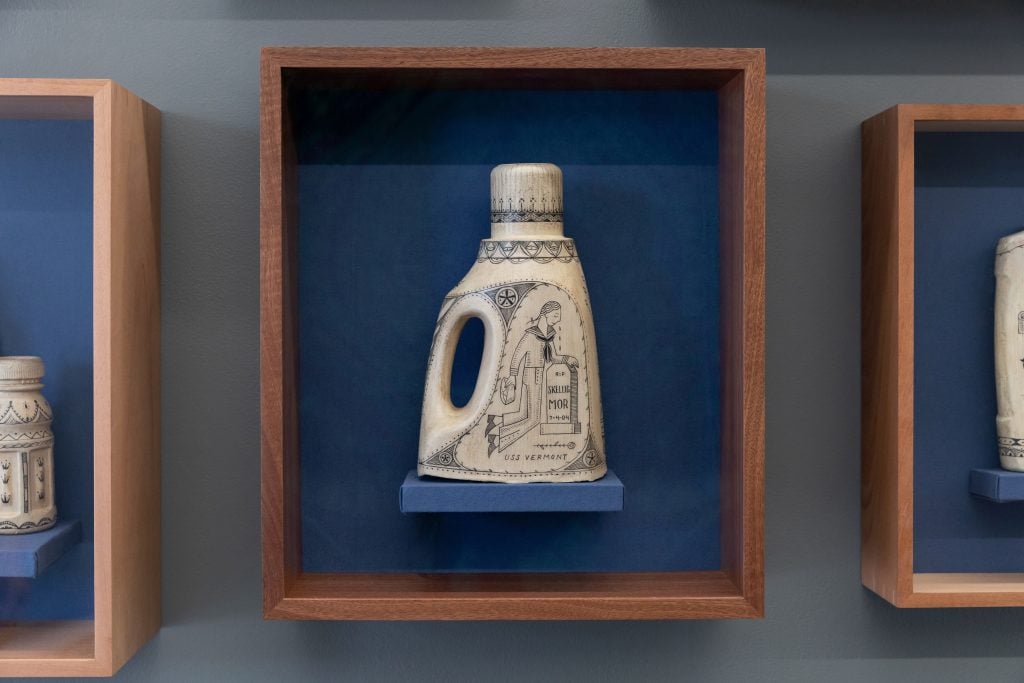
Duke Riley, No. 418 of the Poly S. Tyrene Memorial Maritime Museum (2024), on view at Praise Shadows Art Gallery. Photo: Dan Watkins.
At the heart of Riley’s latest exhibition is a scrimshaw, titled No. 418 of the Poly S. Tyrene Memorial Maritime Museum (2024), commemorating Skellig Mór. But unlike traditional scrimshaw, which sailors etched into bone or ivory, the artist’s work is drawn on a detergent bottle he recovered from the waters of the U.S. eastern seaboard. The container has been treated to mimic the grain of whale bone, while its face depicts a naval officer weeping by the goat’s tombstone.
The work is Riley’s way of not just memorializing the goat, but recognizing its service to the U.S. Navy. “It didn’t willingly enlist,” he noted. “But then again, most humans don’t willingly enlist in the military either. So, there’s some questions about how we separate ourselves from the natural world.”
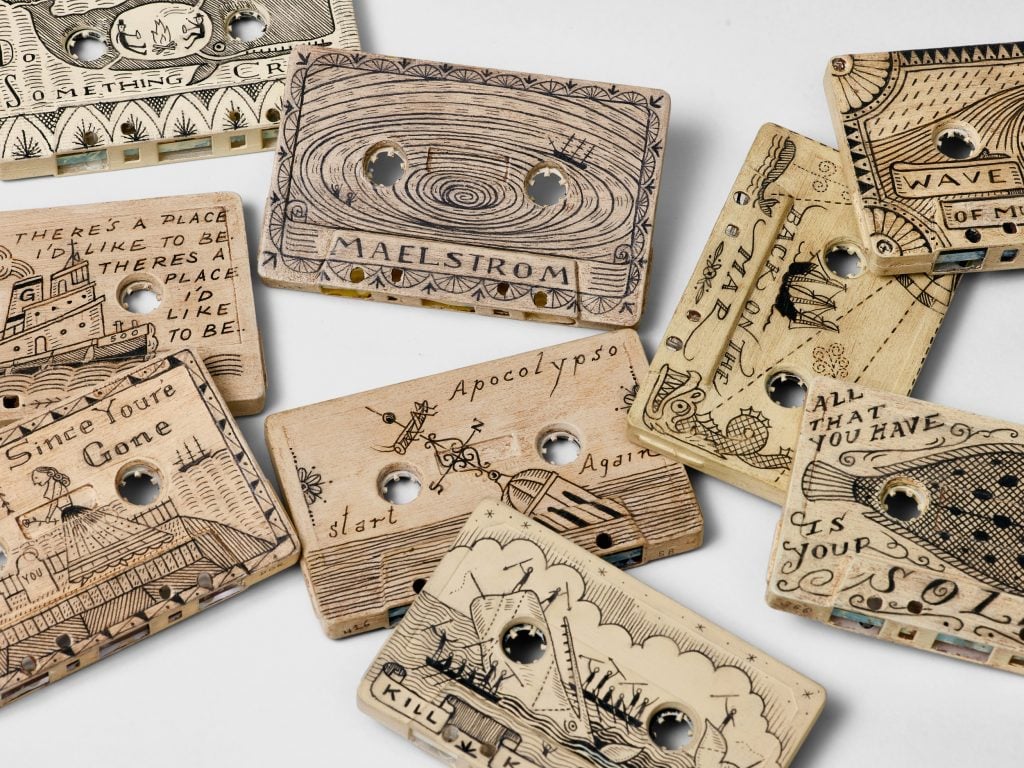
A group of Duke Riley’s scrimshaw cassettes. Photo: Robert Bredvad.
For some two decades now, Riley’s practice has sought to unpack how individual and institutional forces have left indelible marks on our natural landscapes and waterfronts. Notably, he’s done so in his celebrated scrimshaw and mosaics crafted out of scavenged materials, recently showcased at his 2022 solo exhibition at the Brooklyn Museum.
“These objects were designed to be appealing to us so that we’ll keep buying them,” he explained of his salvaged hoard. “There’s no reason why you can’t make beautiful objects out of something that was already designed to be beautiful.”
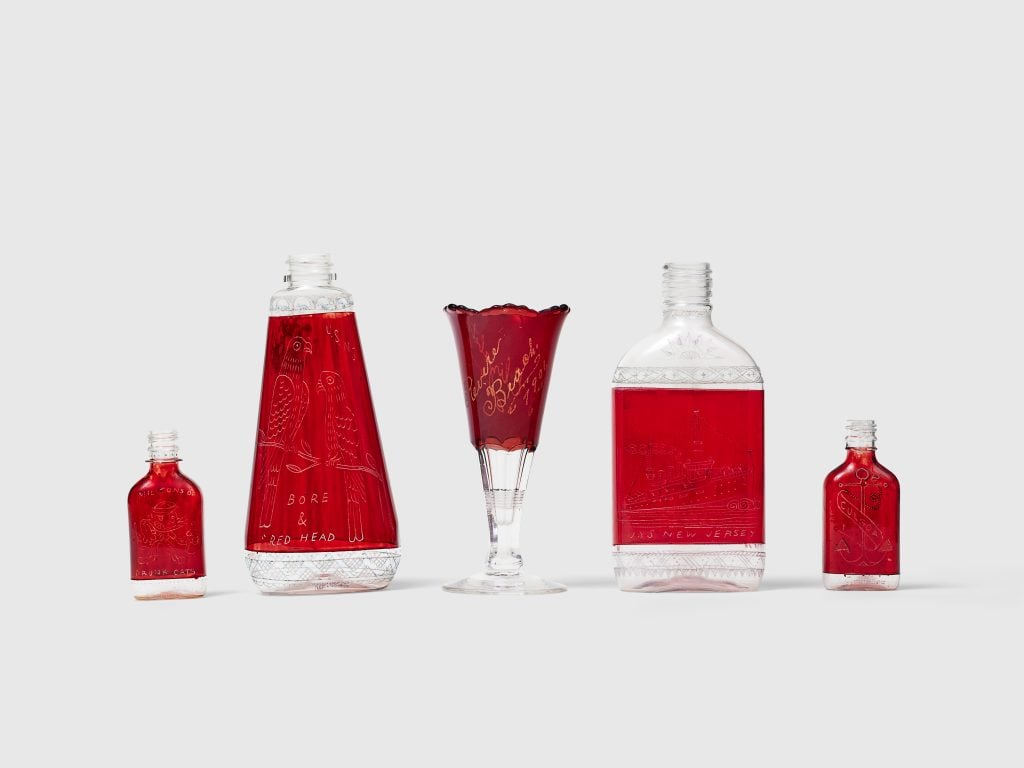
Duke Riley, Five Boston Battleships and Their Accompanying Mascots (2024) (detail). Photo: Robert Bredvad.
At Praise Shadows, Riley is also showing a clutch of “ruby glass” bottles, which reimagine the Victorian souvenir in single-use plastic, as well as more scrimshaw, lovingly hand-drawn as befits a tattoo artist, made of canisters and cassette tapes. His brand of humor and mischief is on display, too: on one scrimshaw tape is rendered a bemused-looking fish with the caption “All That You Have Is Your Sole.”
The exhibition is dominated by his latest sailor’s valentine (a shellcraft memento sailors used to gift their sweethearts), an eight-by-eight-foot assemblage made of shells and plastic detritus including disposable lighters, tampon applicators, and syringes. Riley is betting it’s the world’s largest sailor’s valentine: “I don’t think anybody is stupid enough to do something that big.”
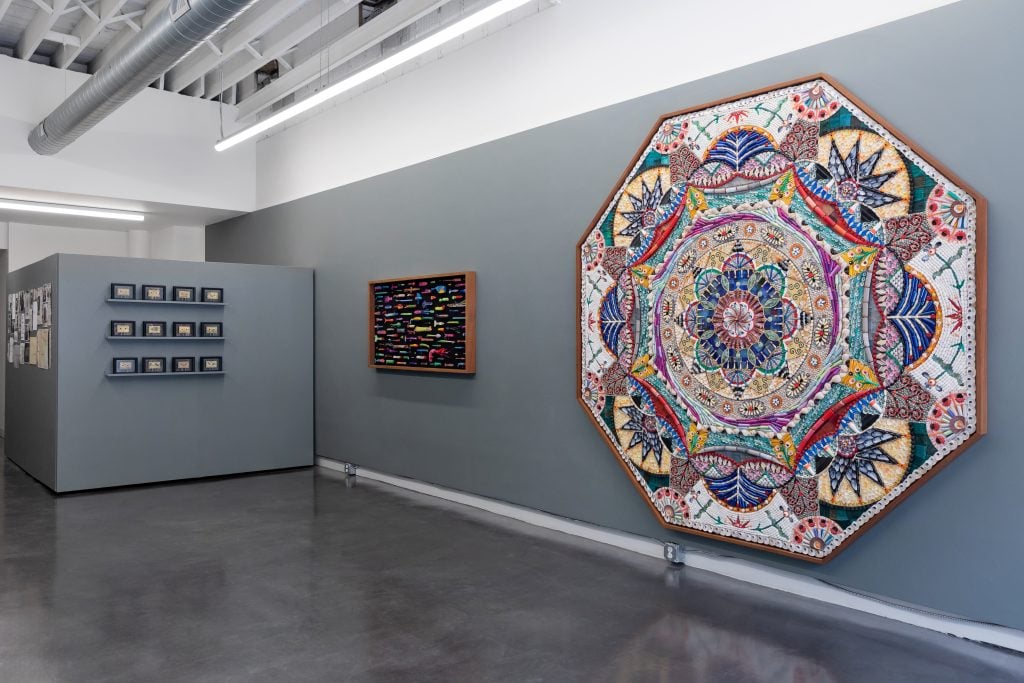
Installation view of “The Repatriation of King Skellig Mór” at Praise Shadows Art Gallery. Photo: Dan Watkins.
Besides Skellig Mór, another animal is getting its due at Riley’s show. One scrimshaw bottle, No. 424 of the Poly S. Tyrene Memorial Maritime Museum (2024), is dedicated to Hoover, a harbor seal housed at Boston’s New England Aquarium in the 1980s. Hoover was beloved for its apparent ability to mimic human speech—and in a Boston accent, no less. But like Skellig Mór, Hoover’s story has been lost to history, save for Riley’s posthumous tribute.
“We have a very short concept of time in our own self-obsessiveness,” he said. “It’s a reflection of our culture that something that was once deemed important has been completely forgotten.”
With that, Riley informed me he had urgent boat business to tend to, namely fishing out some shaving equipment he had accidentally dropped down a toilet. “I have some exciting nautical stuff ahead of me,” he joked. I let him return to the sea.
“The Repatriation of King Skellig Mór” is on view at Praise Shadows Art Gallery, 313A Harvard Street, Brookline, Massachusetts, through June 30.





